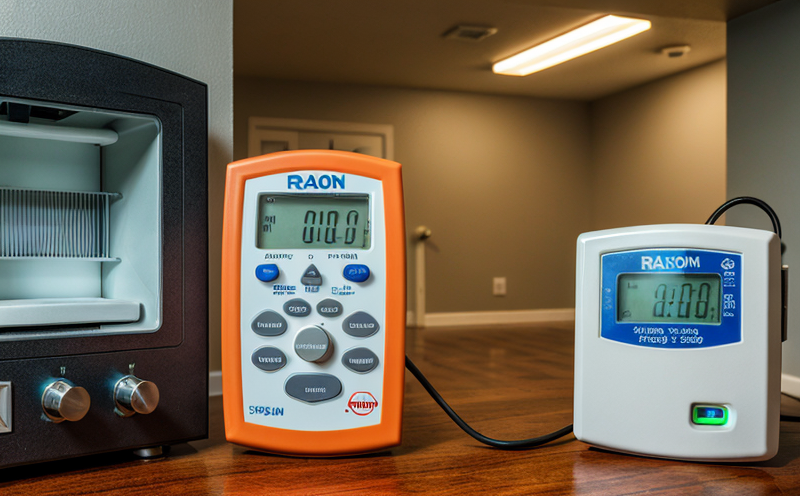ISO 11665-4 Grab Sampling Method for Indoor Radon Testing
The ISO 11665-4 standard provides a robust methodology for the measurement of radon in indoor environments. This method is widely used by quality managers, compliance officers, and R&D engineers to ensure that buildings meet safety standards for radon exposure. Radon is a colorless, odorless gas produced naturally from the decay of uranium in soil, rock, and water. It can enter buildings through cracks in floors or walls, construction joints, gaps around service pipes, electrical wiring, and water systems.
The grab sampling method described in ISO 11665-4 is a short-term measurement technique that collects air samples over a specific period (typically one hour). The sampled air passes through an adsorbent material placed within the sampler. After the sampling period has elapsed, the adsorbent is sealed and transported to a laboratory for analysis using high-volume gas chromatography or alpha spectrometry.
Accurate radon measurements are crucial because prolonged exposure can lead to lung cancer. The World Health Organization (WHO) recommends keeping indoor radon levels below 100 Bq/m³, with the goal of reducing them as far as practicable. This standard is particularly important for residential buildings, schools, and other public spaces where people spend significant amounts of time.
The grab sampling method allows for rapid deployment to identify areas of concern within a building quickly. It can be used in conjunction with longer-term passive measurement devices that provide continuous monitoring over an extended period. By using both methods, organizations can gain a comprehensive understanding of radon levels and take appropriate corrective actions.
Sampling according to ISO 11665-4 ensures consistency and comparability of results across different testing environments. This standardization is essential for regulatory compliance and helps ensure that the measurements are accurate and reliable. Laboratories accredited in accordance with ISO/IEC 17025 can provide these services, ensuring high-quality analytical capabilities.
| Standard Code | Title of Standard | Year Published |
|---|---|---|
| ISO 11665-4 | Grab Sampling Method for Determination of Radon in Air by Activated Carbon Adsorption | 2019 |
Why It Matters
The importance of indoor radon testing cannot be overstressed. Radon is the second leading cause of lung cancer after smoking and poses a significant health risk to individuals, especially those who spend considerable time indoors.
- Health Risks: Prolonged exposure to elevated levels of radon can lead to the development of lung cancer. The longer the exposure, the higher the risk.
- Regulatory Compliance: Many countries have set legal limits for indoor radon concentrations. Regular testing ensures compliance with these regulations.
- Occupant Safety: Knowing the radon levels in a building allows for timely interventions to reduce exposure, thereby enhancing safety and well-being.
The grab sampling method described in ISO 11665-4 is particularly useful because it provides quick results. This enables buildings to address any immediate issues swiftly before conducting more extensive remediation efforts. It also allows for targeted interventions based on specific areas of concern within a building.
By using this method, organizations can demonstrate their commitment to occupant health and safety, which is increasingly becoming a priority in the construction and real estate sectors.
Frequently Asked Questions
Use Cases and Application Examples
- New Construction: Testing during the construction phase ensures that any issues related to radon ingress are identified early, allowing for timely corrections.
- Renovation Projects: Testing after significant renovations can help identify and address changes in air flow or structural integrity that might have increased radon levels.
- Residential Buildings: Regular testing of homes is essential to ensure occupant safety, especially for older properties where the risk may be higher.
- Schools and Public Spaces: Testing these environments ensures that children and other vulnerable populations are protected from potential exposure risks.





